‘Drought is the enemy’: The communities fighting hunger in Somaliland
After years of conflict and worsening droughts, this harvest season has been good for communities in rural Somaliland using FAO’s new "livestock development hubs." Devex explored how livestock is integral to food security in the region.

AINABO, Somaliland — At 10 a.m., it is already hot on Keyse Aden Mohamed’s family farm in Wadamogo village, Ainabo district, northern Somaliland. It is late July, and with the long rains already gone, a recently dried-up water pan — a small reservoir that collects surface runoff water — sits empty in the middle of the farm.
Acacia trees and a dozen other tropical indigenous trees dot the expansive farmland. It would pass for a lush rangeland if not for the uniformity of the pale green local gargaro grass that is grown and used as fodder — nutrient-rich hay for animals to eat in addition to grazing. Three men in a crouched position, sickle in hand, grab tufts of grass, cut away, stack it on a pile, take two shuffling steps, and repeat. Huge mounds of cut grass are heaped near the exit of the farm, evidence of the men’s labor.
In another part of the village, Ugaaso Bulale Warsame, a bespectacled 73-year-old woman, sits on the slab of a water tank outside a hall housing a fodder hub. Inside, a middle-aged man in a yellow vest sings as he feeds the grass into a rumbling machine. A heap of chopped fodder lies at his side and more is already stuffed in bags in storage.
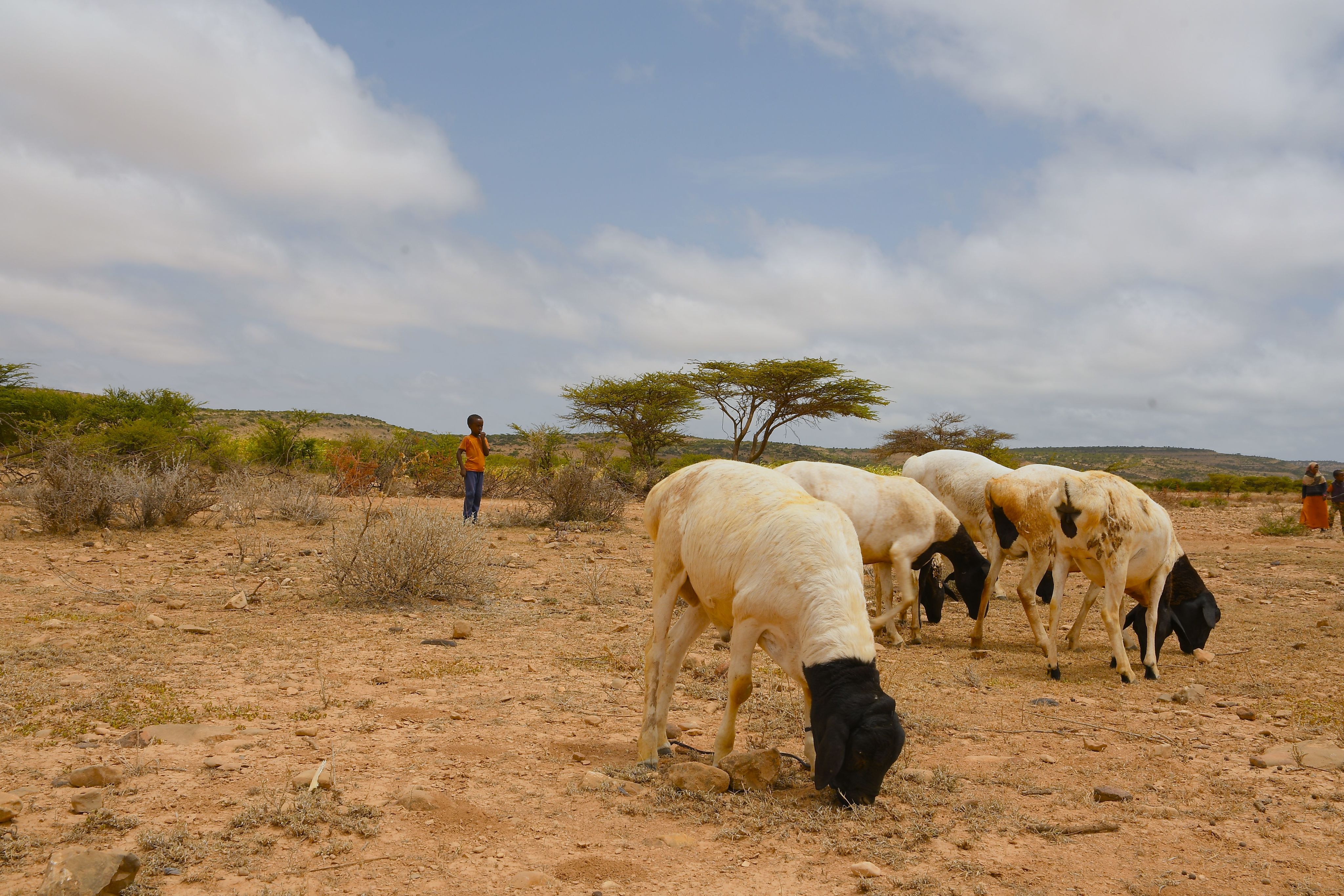
‘Drought is the enemy’
It is fodder harvest time, and farmers are either harvesting or processing their grass. Warsame books a day for her turn to get her fodder chopped. She will pay 25,000 Somaliland shillings ($3) for every 50 kilograms bag of chopped fodder.
The “livestock development hub” is a new initiative from the Food and Agriculture Organization where farmers are trained, organized in groups, and offered access to fodder production equipment and services, training, advice, seeds, and access to markets. The project aims to ensure that farmers get fodder for their livestock even during a drought, helping to improve livestock production and sustain it, hence improving food security.
The need to bolster and secure livestock production is vital as droughts in the East and Horn of Africa regions are worsening. The livelihoods of pastoralists in Somaliland are being decimated and their already low food security is threatened.
That insecurity, brought about by terrorism, border conflicts, and resource-based interclan conflicts, has made it difficult for them to seek pasture far and wide as their traditional nomadic lifestyle would usually allow.
Warsame has seen droughts and famines and lived to tell the tale. But the famine of 1975 is especially memorable. Her family lost all their livestock, and she lost relatives, as many people died in Ainabo and neighboring districts.
After that, droughts have tended to come in predictable cycles of about 10 years apart, she said. In recent years however, she has seen droughts become unpredictable, more frequent, and lasting longer. “Drought is the enemy. The drought means that we do not have milk, ghee, or meat. The lives of our children are affected, and they become malnourished as they do not have enough to eat,” said Warsame; she is a mother to 11 children and grandmother to over 50.
It is through selling milk and livestock — she owns 20 cattle, 15 sheep and goats, and two camels — that she earns enough income to sustain her family, 22 of whom live with her in Wadamogo.
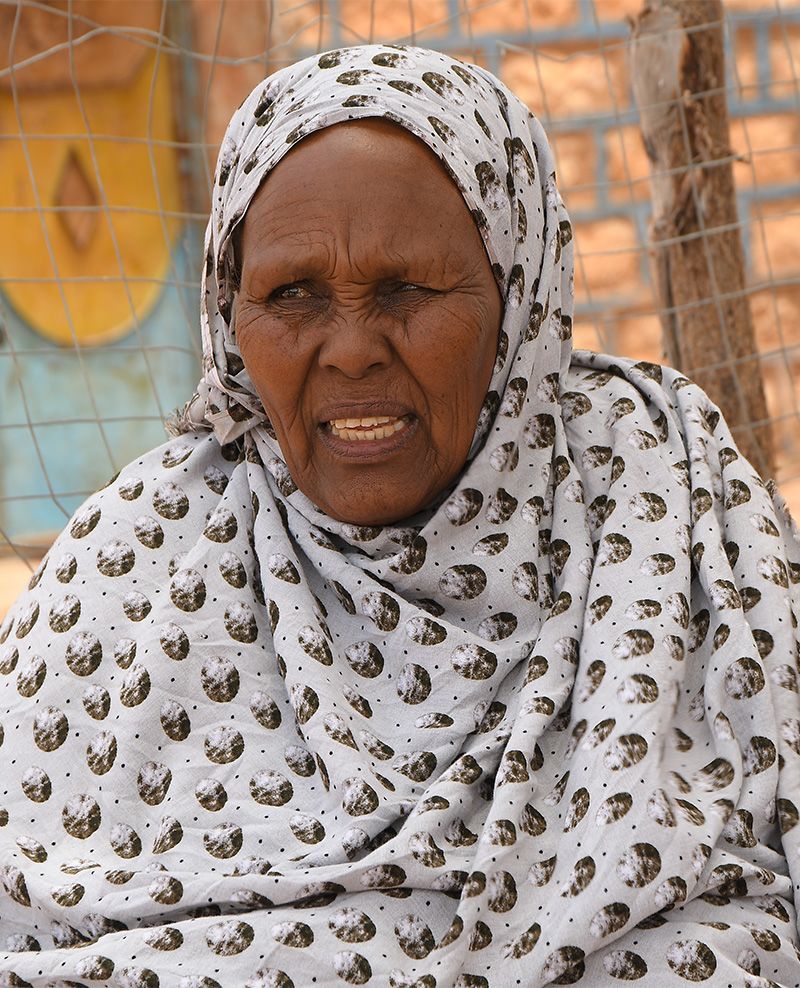
Ugaaso Bulale Warsame in her homestead in Wadamogo village, Ainabo, Somaliland. Before she started growing fodder, she used to travel up to 500 kilometers to buy fodder for her livestock.
Ugaaso Bulale Warsame in her homestead in Wadamogo village, Ainabo, Somaliland. Before she started growing fodder, she used to travel up to 500 kilometers to buy fodder for her livestock.
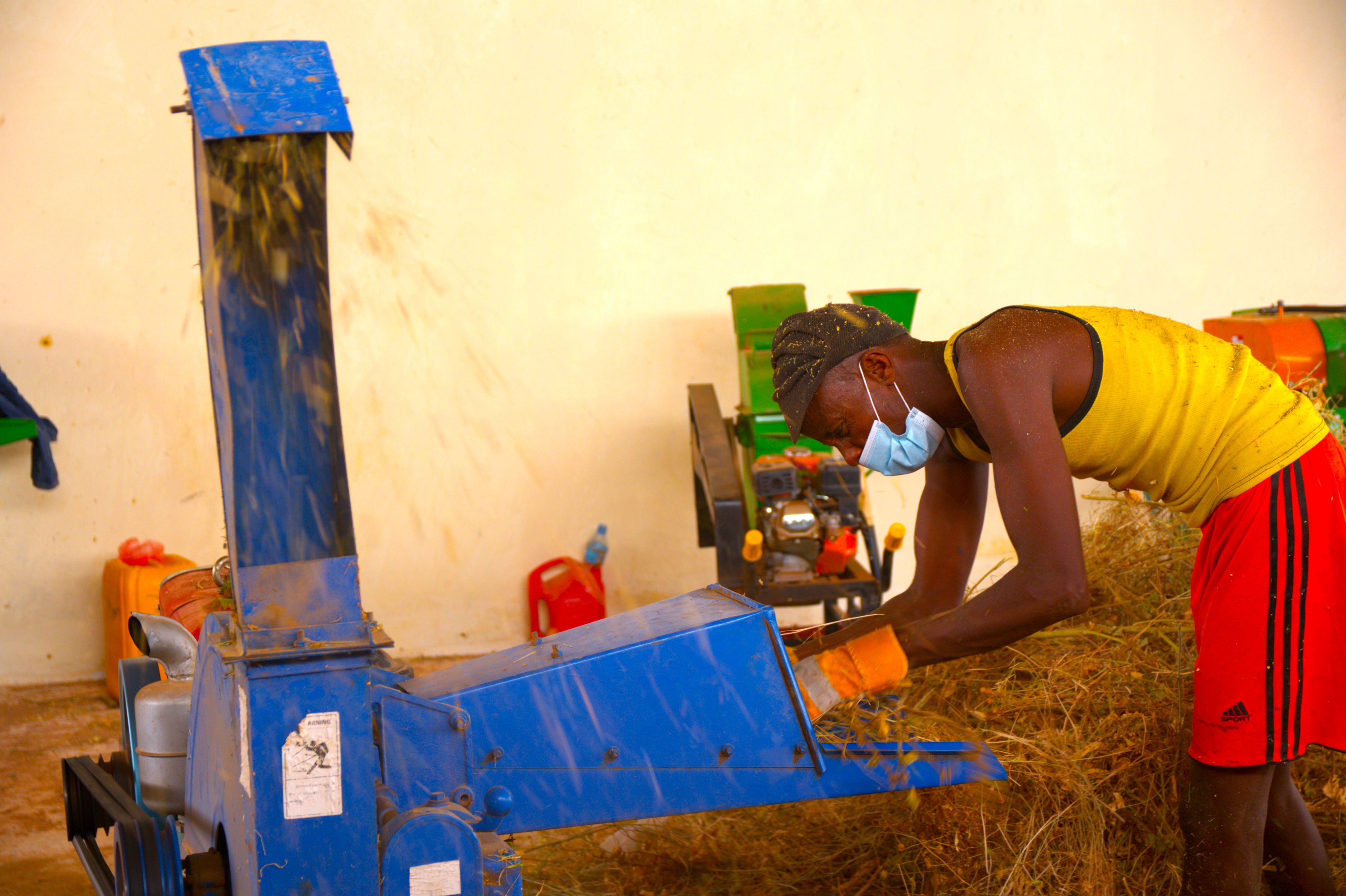
A laborer processes fodder at Wadamogo livestock hub, Ainabo, Somaliland. The hub is equipped with fodder processing machines. Farmers take their fodder for processing at the hub for a fee.
A laborer processes fodder at Wadamogo livestock hub, Ainabo, Somaliland. The hub is equipped with fodder processing machines. Farmers take their fodder for processing at the hub for a fee.
Closing long distances
“When there is no drought, we benefit from our livestock. When there is drought, they benefit from us,” she said. As recently as last year, Warsame bought fodder from nearly 500 kilometers (310 miles) away in Wajaale, on the border of Somaliland and Ethiopia, spending $600 to buy and transport one truck load of unprocessed fodder, including maize and sorghum stalks.
This would only last her a month. When her savings were depleted, she would sell property such as land, or pool resources with other villagers to buy it.
When it does rain and she has adequate fodder for her livestock, Warsame sells milk to traders who in turn sell in Burao town, which is 120 kilometers away. She can sell 20 pints per day for $1 each. “With the sale of milk, I can recoup what I invested in fodder,” she said, but this takes a long time — and her ability to recover has decreased.
Mohamed, a neighbor of Warsame’s, is a university student at Togdheer University in Burao. He recalls the 2016 drought that wiped out 270 of his family’s sheep and goats, leaving them with only 30, and with just five cattle out of the previous 17. Like many families, Mohamed’s family depends on the sale of their livestock and milk to pay for their school fees, health care, and essential foods such as vegetables, cooking oil, and sugar.
With livestock weak from little or no pasture, his family usually is able to receive food on credit from the shops in Wadamogo. “The shopkeeper can only give you credit when he knows that you have livestock, which you will sell when Hajj or the rain comes,” he said.
Somaliland is a huge exporter of livestock to the Middle East, and livestock accounts for more than 60% of its gross domestic product. This past Hajj season, with the resumption of the Muslim pilgrimage to Mecca after three years of COVID-19 restrictions, meant business for livestock farmers in Somaliland. Thousands of camels, cattle, sheep, and goats were sold to traders who came to Wadamogo village, many of which were exported to the Middle East. One trader bought 10,000 sheep and goats. However, Mohamed sold only three rams at a price of $100 each.
During leaner times, people depend on aid for food. The World Food Programme is one of the organizations providing assistance in Wadamogo and other areas in the Sool, Sanaag, and Sahil regions.
In Erigavo district in Sanaag, the mayor, Ismail Haji, told Devex that the last drought had killed half the livestock, “What helped our people were cash transfers from organizations like WFP, the FAO, and the water trucking that we did.”

Building resilience
Unlike in the past when Mohamed and other villagers could move in search of pasture, conflicts have now made it difficult. The current conflict in Las Anod district, 85 kilometers from Wadamogo, has dragged on for months. It meant that earlier this year they were forced to travel 300 kilometers to Gaashamo in Ethiopia instead of using new pastures available in Las Anod. In 2021, two locals who went to Las Anod to use the land were killed in the conflict, he said.
FAO started the Food and Nutrition Security Resilience Program in 2019 targeting Sool and Sanaag regions. The project was funded by the Dutch government and implemented by various local NGOs.
Mohamed said that he has been trained on how to utilize his farm to grow fodder and how to process it for his livestock. This is the second year that Mohamed has been able to harvest grass from his 10-acre farm.
Abdideeq Yusuf, an animal health officer and the Somaliland focal person for the Food and Nutrition Security Resilience Programme with FAO, told Devex that the project works with 17 groups of farmers across Sool and Sanaag regions. Through the project, FAO has helped build 17 livestock development hubs, paid for tractors to help till the land, trained farmers, issued fodder seeds, and provided fodder processing equipment. “Our goal was to target their change of mindset — we provided them with all these things last year and now they are doing it themselves,” Yusuf said.
The government is encouraging more people to settle as opposed to living a nomadic lifestyle. That way, they can get access to infrastructure and services such as schools, hospitals, and water. Mayor Haji said that many people in Erigavo are now settled and work on their own farms.
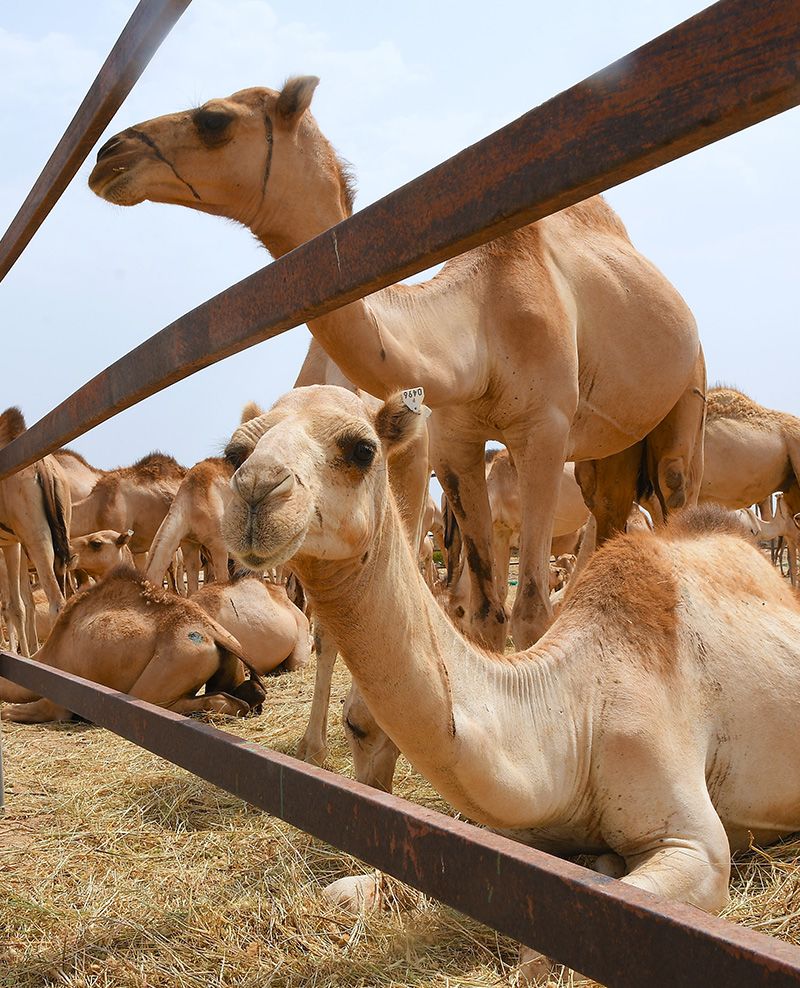
The camels at a quarantine station in Berbera, Somaliland, wait to be cleared for export to the Arabian Peninsula.
The camels at a quarantine station in Berbera, Somaliland, wait to be cleared for export to the Arabian Peninsula.
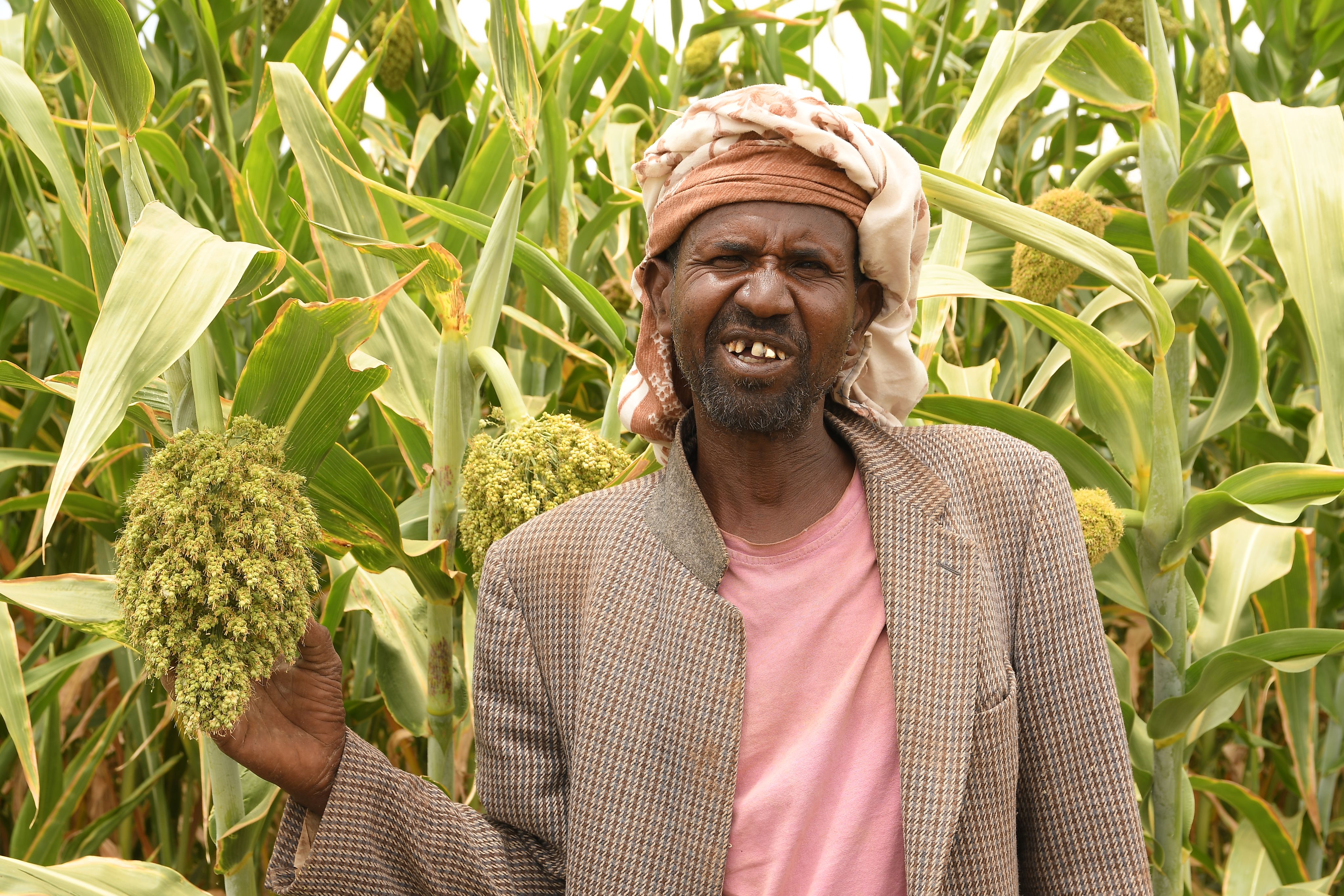
A farmer in Laanqaley village, Erigavo, Somaliland, poses in his sorghum farm. Farmers harvest the sorghum for food and process the stalks in the fodder hub for their livestock.
A farmer in Laanqaley village, Erigavo, Somaliland, poses in his sorghum farm. Farmers harvest the sorghum for food and process the stalks in the fodder hub for their livestock.
Securing nutrition
For Warsame, the project means better food security for her family. “Through the project we have food for our livestock, and when our livestock have food, our lives are better,” she said. In addition to fodder seeds, they were also given vegetable seeds, including cabbage, carrot, tomatoes, spinach, hot and sweet pepper, and watermelon, to help improve nutrition.
Mohamed estimates that the fodder he is harvesting is enough for his three cattle and 100 sheep and goats for over one year. He will also save money that he would have had to use to buy fodder during the drought — and he might even sell some.
Warsame and Mohamed feel that what is still missing is access to water. Water access is very poor in the region and there are few projects, if any, with the purpose of improving it.
There are very few boreholes and many depend on water collected during the rainy seasons. “If we had enough water, I would even start zero-grazing [where cattle only eats cut grass rather than graze] my livestock now that I have the fodder,” she said.
However, going forward, both Warsame and Mohamed have high hopes for better recovery and multiplication of their livestock and higher returns. With enough fodder to last her 12 months, Warsame is confident about the future. “My cattle are in the late stages of pregnancy and will soon give birth. In two months, I will have milk,” she said.
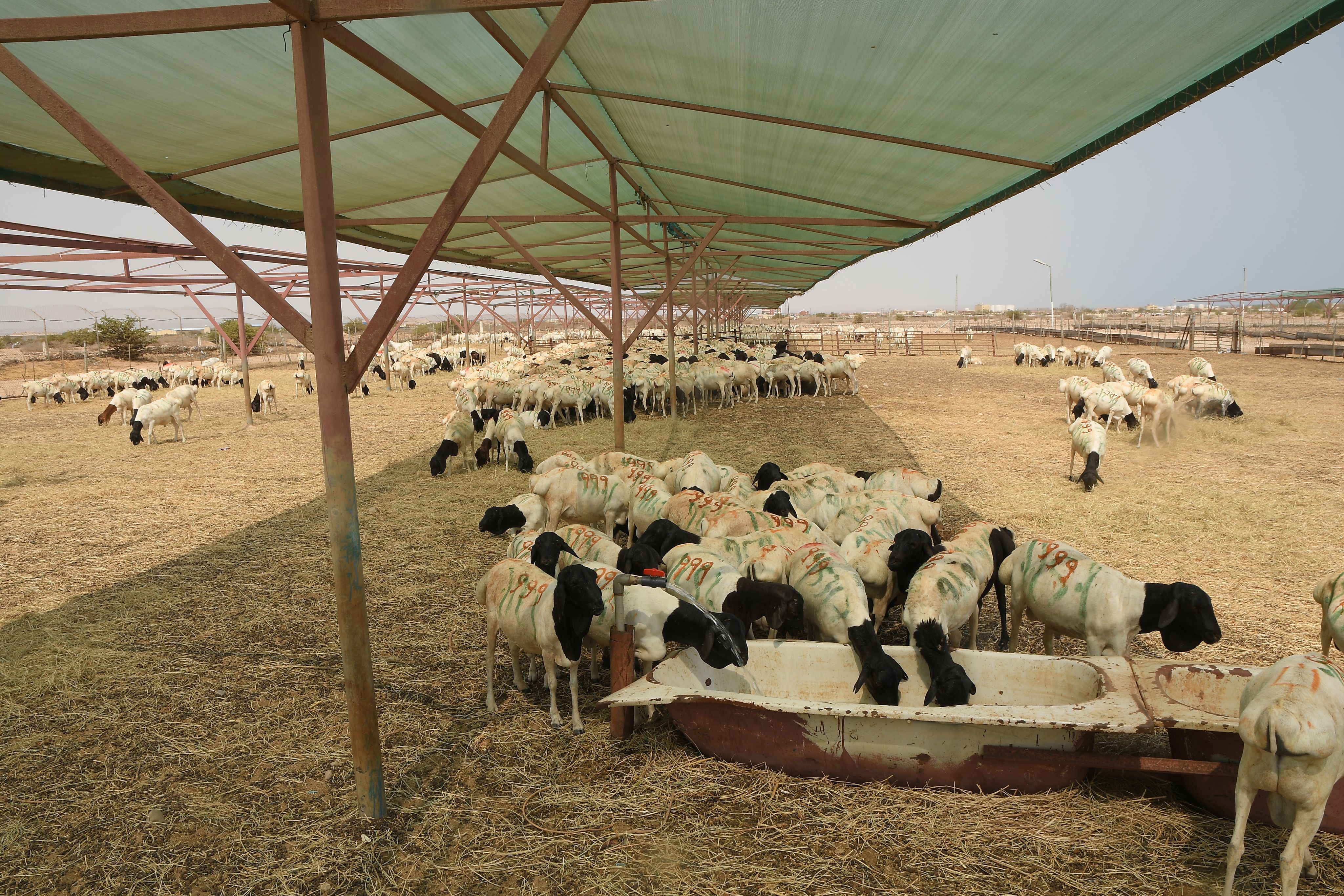
Reporting and photos by Anthony Langat
Edited by Helen Lock
Shorthand production by Naomi Mihara
Visit Food Secured — a series that explores how to save the food system and where experts share groundbreaking solutions for a sustainable and resilient future.
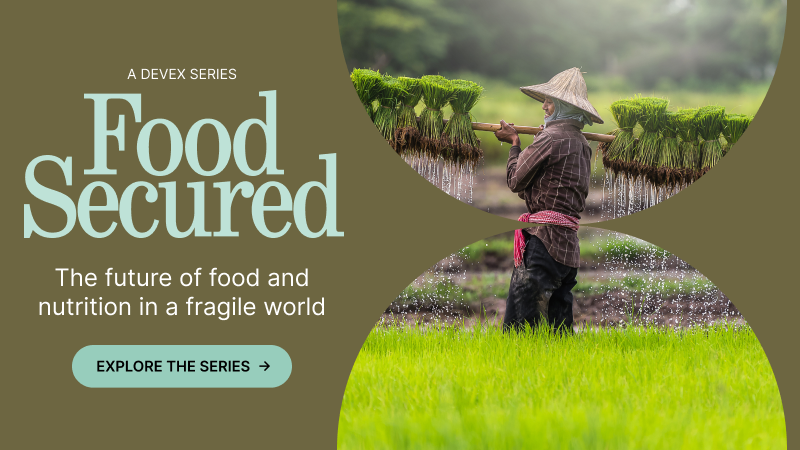
This is an editorially independent piece produced as part of our Food Secured series, which is funded by partners. To learn more about this series and our partners, click here.
